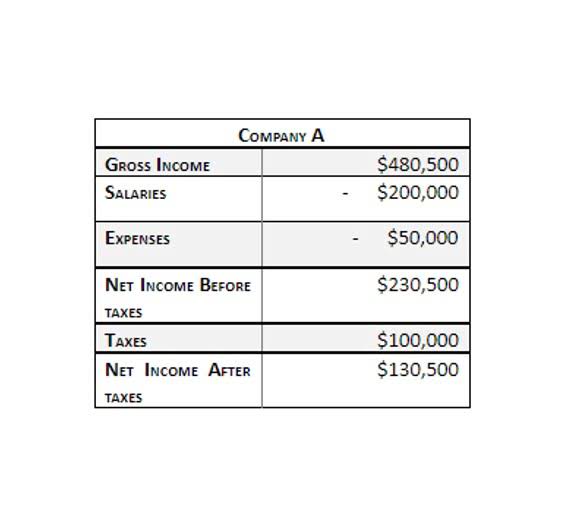
The process of recording an inventory write-off affects a company’s financial performance measures, primarily impacting its cost of goods sold (COGS), gross margins, net income, and retained earnings. Let’s explore how these key financial metrics Accounting for Technology Companies are influenced by inventory write-offs. A manufacturing company may record an inventory write-off due to obsolete machinery that is no longer useful, which significantly impacts both the balance sheet and income statement.
Bad Debt Allowance Method
- The Direct Write-Off Method offers a straightforward approach to handling bad debt expense, but it’s essential to consider the implications it has on financial reporting and tax obligations.
- In conclusion, understanding the underlying causes of inventory write-offs is crucial for businesses in managing their assets efficiently and maintaining transparent accounting practices.
- Once we have a specific account, we debit Allowance for Doubtful Accounts to remove the amount from that account.
- This reduces the accounts receivable and recognizes the expected loss from the uncollectible amount.
- In the realm of accounting, the Direct Write-Off Method is a pragmatic approach to managing bad debt expense.
- This is because the allowance method follows the matching principle and gives a more accurate picture of a company’s financial situation.
On the other hand, financial analysts might view this method with skepticism, as it can lead to inconsistencies in financial reporting and distort a company’s financial health. The direct write-off method is used only when we decide a customer will not pay. We do not record any estimates or use the Allowance for Doubtful Accounts under the direct write-off method. This method violates the GAAP matching principle of revenues and expenses recorded in the same period. While the Direct Write-Off Method is simpler and may be suitable for smaller businesses, the Allowance Method provides a more accurate and GAAP-compliant approach for larger companies and those with significant credit sales. Understanding the differences and implications of each method is crucial for businesses to choose the most appropriate approach for their specific needs.

What Is Wrong with the Direct Write off Method?
When it comes to large material amounts, the allowance method is preferred compared to the direct write-off method. In summary, an inventory write-off acknowledges that a portion or all of inventory has no further value, whereas a write-down recognizes a decrease in inventory’s market value. The following chart shows how the direct write-off method would account for the uncollectible account. In this case, ABC Inc. will use the direct write-off method to account for the uncollectible amount. Some industries or regulatory frameworks may require or favor the Direct Write-Off Method. In such cases, businesses benefit from compliance without the need for additional reconciliation processes.

Introduction to Inventory Write-Offs
- This estimate is based on the sales and collections information from previous years and is reported by setting up a holding account called the allowance for doubtful accounts x.
- Also, the direct write-off method doesn’t consider how uncertain it is that accounts receivable will be paid.
- We can calculate this estimates based on Sales (income statement approach) for the year or based on Accounts Receivable balance at the time of the estimate (balance sheet approach).
- Each business must consider its specific circumstances, including financial, tax, and regulatory requirements, before deciding on the best approach to handling bad debt.
- In this section, we will explore how the allowance method works, its advantages, disadvantages, and journal entries.
- Simultaneously, there’s a credit entry against the inventory asset account to reduce its balance.
Facilitate effective inventory management by identifying and eliminating problematic items or processes. An inventory write-off refers to the process of removing from a company’s balance sheet any obsolete or worthless inventory that no longer holds any future economic benefit. The goal is to accurately reflect the value of the company’s assets and avoid misstating its net income, gross margins, or retained earnings. When inventory becomes obsolete, spoils, becomes damaged, or is stolen or lost, a write-off is required to adjust the balance sheet for accurate financial reporting. In January, it makes a sale of $10,000, expecting to receive the payment within 30 days.


On the other hand, the Allowance Method provides a more accurate picture of a company’s financial health by ensuring that bad debt expenses are recognized in the same period as the related sales. It also complies with GAAP and IFRS, making it the preferred method for most companies. The Allowance Method offers a more realistic view of a company’s direct write-off method financial health by accounting for potential losses from uncollectible accounts.
Allowance MethodThe allowance method for inventory write-offs is a contra asset account used to recognize estimated losses in inventory value. When inventory may be expected to lose value but has not yet been disposed of, an allowance account is established as a contra asset. The allowance account offsets the inventory asset account, reducing its net book value. unearned revenue For instance, some companies might like the allowance method because it clarifies how much they think they will lose because of bad debts. On the other hand, some people might like the provision method because it shows expected losses as expenses on the income statement.
- When businesses encounter bad debts, they must choose an accounting method to reflect these uncollectible amounts.
- The calculation here is a few more steps but uses the same methodology used in all the other methods.
- Two main alternatives to the direct write-off method for accounting for bad debts are the allowance and provision methods.
- This direct write-off method shows that the company has recognized the uncollectible account as a loss and will not attempt to collect the debt any further.
- As a result, financial statements prepared using this method may not provide a fair and accurate representation of a company’s financial health.
📆 Date: June 28-29, 2025🕛 Time: 8:30-11:30 AM EST📍 Venue: OnlineInstructor: Dheeraj Vaidya, CFA, FRM
This method involves directly writing off bad debts from accounts receivable to the expense account at the time when they are identified as uncollectible. This approach contrasts with the allowance method, which anticipates potential bad debts and creates an allowance for doubtful accounts in advance. The allowance method for bad debts ensures a realistic portrayal of profitability by aligning bad debt expenses with the corresponding sales within the same reporting period, adhering to the matching principle in accounting.

